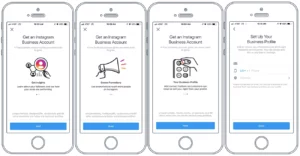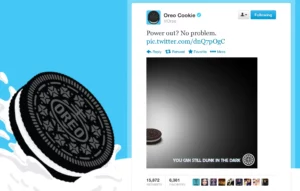
For decades, traditional tactics have been the primary choice for marketing. From flashy newspaper advertisements to clever billboards, the success of these forms must not be discounted. Despite this, societies around the world are developing rapidly and are becoming more dependent on technology every day. While many traditional marketing techniques are still effective, digital marketing has nearly taken over entirely, and the reasons it has done so are that it is more cost-effective, it contributes more to customer value, and it builds stronger brand awareness.
Traditional Marketing
Traditional marketing is a method of marketing that uses offline forms of media in an attempt to reach an audience. For quite some time, this traditional form of marketing has advertised using roadside billboards, newspaper and magazine ads, and direct mailings. It is important to recognize that while not entirely as effective as digital forms of marketing today, traditional marketing has still proven to be very successful and has benefits of its own.

Before diving into the few benefits of traditional marketing, it is important to recognize, too, that such marketing has established itself to have a lasting impact. For nearly seventy years, businesses have used print advertisements and billboards to promote themselves. Its success and ability to grow a company must be recognized as it is still prominent to this day. In fact, to a certain degree, it could be argued that social media, the platforms where digital marketing thrives, is more of a fad that won’t have the longevity that platforms hosting traditional marketing have enjoyed. It is possible that consumers could get bored with social media, and past data has shown that networks naturally lose popularity. For example, MySpace was all that could be talked about fifteen years ago, yet hardly a word is said about it now; the same pattern could repeat itself for Twitter, Instagram, and other currently popular platforms. In addition, researchers are finding that there are psychological effects that social media itself is having on those who use it. The excessive use of social media by younger generations in particular can cause them feelings of isolation and, ironically, social disadvantage if they feel that others are living happier and more connected lives based on a post. While this does not directly relate to advertising done through the various platforms, it proves that social media, at times, has a negative connotation to it as a whole. Because of this, traditional marketing is a preferred source at times, or could at least be claimed as being less prone to these negative side effects.1

One of the primary benefits of traditional marketing is its ability to appear credible to its audience. Although traditional marketing is generally more expensive, consumers often associate traditional marketing techniques with large and established companies that have the budgets for large marketing campaigns. This perception helps those companies gain their customers’ trust as they appear to have long-term stability. Furthermore, traditional marketing techniques are often harder to ignore than advertisements on social media. These traditional marketing techniques can also reach audiences that social media marketing cannot. For example, target audiences can be reached even by those who may spend time away from their devices. Also, if a company sends direct mail to consumers in their target area, then they are reminded how convenient a business may be to them and will become more conscious of its existence. Even after understanding the positives of traditional marketing, digital marketing’s benefits still outweigh those of its traditional competitors.2
Digital Marketing
Digital marketing is the use of digital communication and the internet by brands, sports teams, musicians, media personalities, and even government agencies to promote themselves, and their businesses, or simply to raise an awareness of some kind to others. With over sixty percent of the world’s population using social media, using applications like Instagram, Twitter, and TikTok has consistently proven to be an effective way to increase sales. As the population grows and Generation Z enters the workforce, the use of social media will only continue to increase, a realization that marketers must not miss. Digital marketing tactics not only reach large audiences but they also increase brand awareness and customer engagement, and if done properly, they can create a reputation that is nearly impossible to ignore. On top of all of this, promoting a business through the use of digital marketing and social media can be done by anyone for no cost if necessary, and feedback on its effectiveness can easily be received.3
With the amount of time that individuals spend daily in their cars, billboard advertisements have proven to be successful. While this is true, it must be noted that they can cost up to thousands of dollars per month for only a select group of people actually to see them. On the other hand, social media demolishes any geographical barriers, as marketing can be done internationally with as little as a few clicks. With the ability to use digital techniques, businesses have the opportunity to reach possible customers who may not have had a chance at ever seeing their product.4
In addition to social media breaking a geographical barrier with marketing, it also builds brand awareness. The creators of social media applications aim for their platforms to be the most used; therefore, they target the psychological reward system in humans, generating dopamine levels and eventually creating an addiction to social media. While this addiction can be unfortunate, depending on the perspective, companies must take advantage of this addiction if they hope to see the highest marketing success. If individuals log on to Instagram, for example, multiple times a day and see the same company advertisement each time on the app, then they will acknowledge it and become more inclined to explore what good or service is being offered.5
Although traditional marketing does succeed to a certain degree in building brand credibility, digital marketing certainly does so more effectively. Interaction is a key tool in creating such credibility, and ensuring it happens simply relies on one’s ability to be authentic. The primary reason that people use social media is to connect with others, so if a brand can be humanized, then customers can relate to the individuals behind the logo.6 In fact, many social media managers are beginning to be very open about their role within a company, even showing others the behind-the-scenes of their job. By doing so, a relationship is built and a deeper, more genuine, connection is created between businesses/brands and consumers. An additional way to do so is through companies participating in the latest trends and simply not following the general grammatical structure when constructing posts; creativity is necessary. Erin Berman, a highly known and successful brand strategist, created a marketing agency, Blackbeard Studios, for the sole purpose of assisting companies in building an engaged community. “Stories drive brands,” according to Berman, and if communicated thoughtfully, a business can grow exponentially.
As briefly mentioned previously, the gains of social media can be received by companies through minimal costs attached. Large businesses have the ability to set aside a significant portion of their advertising budget for traditional tactics, like billboards and magazine advertisements, while small to medium-sized companies do not have this luxury. Because social media is an inexpensive resource that all sized companies can benefit from, small businesses and brands have a greater chance of competing with larger ones. According to one study, the cost to reach two thousand individuals is nearly fifteen times more expensive when using traditional methods of promotion.7

As effective as some traditional marketing techniques can be, the feedback received on them is minimal and not very accurate. On the contrary, digital marketing is incredibly measurable, making it easier for companies to adjust and improve their strategies. Tracking metrics can be done through tools, such as Google Analytics, where likes, clicks, comments, impressions, and shares can all be tracked. All of this can be monitored throughout the duration of a campaign, rather than wasting time and budget on methods that are possibly not working. By measuring results, businesses are more likely to see success. In fact, social media platforms even offer the creation of specific accounts for the pure purpose of using them for business. For example, through Instagram for Business, a company can easily gain insights to track their account performance while also displaying their contact information, selling directly through their profile, and engaging with the community.8
Successful Campaigns

One of the most valuable tools for a company to be successful on social media is having the opportunity to be relevant to current events. In order to increase a humanized feeling, it is important for brands to keep up with current events and make it clear that they do so through their platform. During the 2013 Super Bowl, a football event watched by over one hundred million people, there was a power outage resulting in a thirty-four-minute delay of the game. In an attempt to both lighten the well-being of others and increase engagement, Oreo posted a Tweet stating, “Power Out? No Problem. You can still dunk in the dark.” with a simple, yet powerful, graphic of an Oreo in a lighted section of a dark screen. In a short period of time, the post became incredibly popular, reaching over fifteen thousand retweets. As more details were later revealed, fifteen people worked on the Tweet and they shared their process of coming up with the idea. They were each watching the game, some in person while others at home; then, the blackout made it clear that they should jump on the opportunity to develop popularity. After bouncing ideas with one another and eventually deciding, it was immediately successful, with reporters quickly wanting information on it. This event showed that if a company is genuine and authentic through social media, users are bound to pay attention.9
While already seventy-five years in of earning a reputation, Lays did a campaign with the title “Do us a flavor.” Although the creative title already drew an individual’s attention, the use of social media for the campaign resulted in an unmatched user engagement level. The goal of the campaign was to prompt their customers to create a new flavor of chips. By using Facebook, Twitter, and even a messaging system, they received millions of submissions in a matter of months. After cutting this total down to the top twenty-five and then testing each of them, narrowing it down to the top three, Lays put these flavors in stores, followed by one final stage of voting so a winning submission could be announced. The creation of the winning flavor, cheesy garlic bread, received a one-million-dollar prize, but sales within the company increased an astonishing twelve percent. Consumer participation drove this growth.10
Finally, AT&T’s “Be the fan” campaign caused an eighty-percent increase in engagement rate on Twitter, a true indicator of a successful social media strategy. Throughout the duration of a football season, a famous actor portrayed a coach, encouraging fans to complete weekly challenges on game days. Users were able to do so by using applications, such as Twitter, Instagram, and Vine, to share their content, and the winners were later announced on the web. In addition to an increase in the Twitter engagement rate, there was a four-hundred percent increase in sweepstakes entries and an increase in social buzz by two-hundred-seventy-one percent. The actor who participated in the campaign even significantly increased his popularity across social media. With this campaign, AT&T successfully displayed the ability of social media to promote growth and simultaneously showed how easy it is to track metrics when social media marketing tactics are used as opposed to traditional marketing.11
Conclusion
Although traditional marketing tactics still remain relatively successful, social media is a tool in marketing that companies must certainly take advantage of. In today’s bustling business world, companies must choose to understand that times have evolved, and the use of digital marketing is inevitable if success and growth are hoped to be achieved. By increasing brand awareness and building an engaging community all with limited costs, the ability to reach a larger number of people, and the capacity to track metrics, the outcomes of social media are limitless and will only continue to rise.
I would like to thank Dr. Whitener for his assistance throughout the duration of the project. His guidance and experience motivated me to create a successful publication. Also, I would like to extend my gratitude toward Franchesca Tinacba, as she thoroughly helped during the editorial phase of the project. Finally, I would like to express my appreciation to Dr. Joseph, as he assisted me in finding a topic that I was truly passionate about and mentored me during the creation of this article. It has been a fantastic journey bringing this research to publication, and I am grateful for the help and advice of my St. Mary’s team.
- Lawrence Ejike Ugwu et al., “Measuring the Impact of Social Media on Young People’s Mental Health: Development and Validation of the Social Media-Induced Tendency Scale,” ed. Zahir Vally, Depression Research and Treatment (April 19, 2023): 2. ↵
- Cassie Kutev, “WHAT IS TRADITIONAL MARKETING? PLUS TYPES, PROS, AND CONS.,” Indeed (July 2023), https://www.indeed.com/career-advice/career-development/traditional-marketing. ↵
- Lidija RISTESKA, “BENEFITS OF DIGITAL MARKETING,” Vizione, no. 41 (July 2023): 219. ↵
- Lidija RISTESKA, “BENEFITS OF DIGITAL MARKETING.,” Vizione, no. 41 (July 2023): 215. ↵
- Shahin Heidari et al., “INCREASING SALES THROUGH SOCIAL MEDIA MARKETING: THE ROLE OF CUSTOMER BRAND ATTACHMENT, BRAND TRUST, AND BRAND EQUITY,” Social Media Marketing as a Sales Growth Tool: The Role of Loyalty, Trust, and Brand Equity 14, no. 1 (January 2023): 224–34. ↵
- Lidija RISTESKA, “BENEFITS OF DIGITAL MARKETING.,” Vizione, no. 41 (July 2023): 217. ↵
- Lidija RISTESKA, “BENEFITS OF DIGITAL MARKETING.,” Vizione, no. 41 (July 2023): 215–16. ↵
- Lidija RISTESKA, “BENEFITS OF DIGITAL MARKETING.,” Vizione, no. 41 (July 2023): 218. ↵
- Utku Köse and Selçuk Sert, “SOCIAL MEDIA ENVIRONMENTS AND THEIR ROLE ON SUCCESS OF MARKETING PROCESSES,” Knowledge Management, (2015): 11. ↵
- Utku Köse and Selçuk Sert, “SOCIAL MEDIA ENVIRONMENTS AND THEIR ROLE ON SUCCESS OF MARKETING PROCESSES,” Knowledge Management, (2015): 8. ↵
- Utku Köse and Selçuk Sert, “SOCIAL MEDIA ENVIRONMENTS AND THEIR ROLE ON SUCCESS OF MARKETING PROCESSES,” Knowledge Management, (2015): 9. ↵



1 comment
Mariana Chamorro
Savannah, your publication on marketing is great! I especially like how you show the benefits of both traditional and digital marketing, and your examples of successful digital campaigns are really interesting. Awesome job!